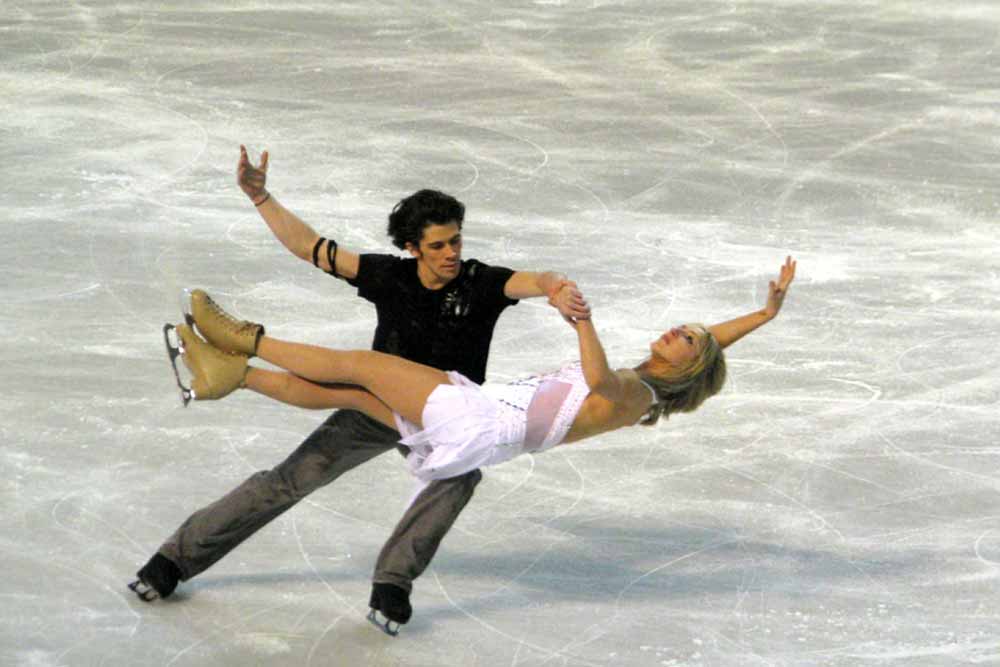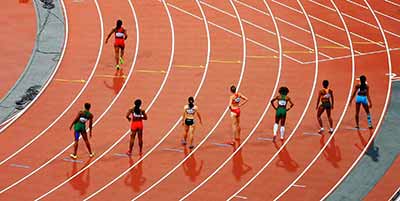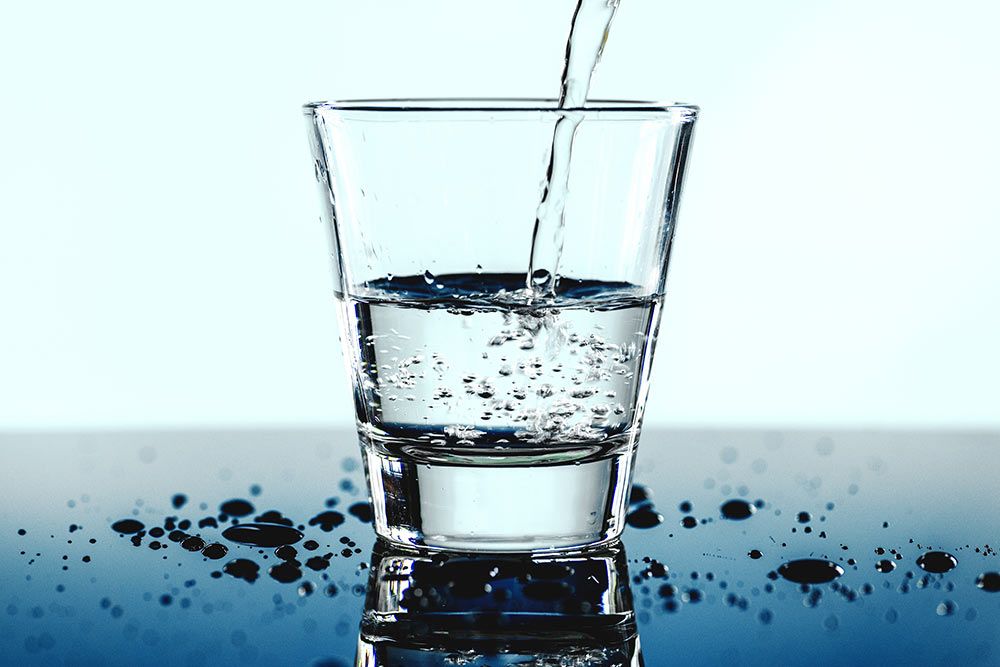It’s Your Moment. Find Out How You Can Keep From Choking Under Pressure.

Dayton Kelly
This article was adapted from a combination of speeches given at the European Sports Science Conference 2018, most notably Denise Hill (SWANSEA UNIVERSITY, UK), Christopher Mesagno (FEDERATION UNIVERSITY, AUSTRALIA), and Juergen Beckmann (TECHNICAL UNIVERSITY MUNICH, GERMANY)
Life and sport are filled with moments of pressure; everyone has experienced instances when the failure to perform will result in devastating consequences. For the athlete, this may be the penalty kick to win the championship game or the last jump of an Olympic figure skating performance. In such situations, one’s worst fear is to choke under pressure. In this context, choking can be defined as a poor performance that deviates outside of the individual’s norm as a result of perceived pressure (Beckmann, Gröpel, & Ehrlenspiel, 2013). While some individuals seem resilient to choking, many are not. In fact, some individuals experience chronic choking that can destroy careers and produce lifelong feelings of self-loathing.
What produces choking?
 While many reasons for choking exist, two main attention-based models are currently used to explain choking: the distraction model and the self-focus model (Mesagno & Beckmann, 2017; Beckmann et al., 2013). Under both models, the choker feels increasing anxiety associated with the performance event, leading to altered attentional focus during the task (Mesagno & Beckmann, 2017). The distraction model suggests that anxiety causes the individual to focus on external elements of the environment irrelevant to the task at hand (Mesagno & Beckmann, 2017). For example, a soccer player may be focusing on the size of the crowd and expression of his coach before a penalty kick rather than the position of the ball and goaltender. These external elements consume attentional resources leaving insufficient focus to properly complete the task (Mesagno & Beckmann, 2017).
While many reasons for choking exist, two main attention-based models are currently used to explain choking: the distraction model and the self-focus model (Mesagno & Beckmann, 2017; Beckmann et al., 2013). Under both models, the choker feels increasing anxiety associated with the performance event, leading to altered attentional focus during the task (Mesagno & Beckmann, 2017). The distraction model suggests that anxiety causes the individual to focus on external elements of the environment irrelevant to the task at hand (Mesagno & Beckmann, 2017). For example, a soccer player may be focusing on the size of the crowd and expression of his coach before a penalty kick rather than the position of the ball and goaltender. These external elements consume attentional resources leaving insufficient focus to properly complete the task (Mesagno & Beckmann, 2017).
By comparison, the self-focus model suggests that performance anxiety causes the individual to focus too intently on the upcoming task: immense pressure to perform causes the performer to over analysis minute aspects of the necessary movement pattern (Beckmann et al., 2013). For example, when taking a golf shot the shooter may consciously attempt to control small aspects of the shot such as the position of his/her toes or the tightness of their grip on the handle. This fundamentally differs from that the normal automatic “feeling” experts usually rely on to perform tasks (Beckmann et al., 2013).
Related Article: 4 Ways to Overcome Sports Performance Anxiety
Overcontrolling Actions
Overcontrolling actions is more analogous to the cognitive operations required by amateurs (Beckmann et al., 2013). Amateurs must explicitly think about and internally verbalize each element of a movement rather than rely on a feeling (Beckmann et al., 2013). This process is associated with high activation of the left hemisphere of the brain as compared to more automatic skill performance which is right hemisphere dominated (Beckmann et al., 2013). Overcontrolling actions, and left hemisphere dominance which occurs during overcontrolled task performance, causes breakdown of the smooth, expert motions necessary for successful performance (Beckmann et al., 2013). When this overcontrol occurs in athletes due to high pressure, the result is poor performance and choking.
While self-focused choking is thought to be the most common form of choking, distraction-based choking also occurs (Mesagno & Beckmann, 2017; Mesagno & Mullane-Grant, 2010). Choking is probably best explained on an individual basis by a combination of the two models (Mesagno & Beckmann, 2017).
Related Article: The Most Effective Coping Technique for Competition Performance
What can we do to stop choking?
Your strategy to prevent choking under pressure should depend on the type of choking you are experiencing: distraction-based or self-focused (Mesagno & Beckmann, 2017). The best-supported method of reduced distraction-based choking is the development of a pre-performance routine. This routine should consist of a series of movements or actions (e.g. deep breaths, slapping thighs, etc.) prior to the initiation of the skill (Mesagno & Mullane-Grant, 2010). This process is thought to draw attention from external factors and direct it towards the skill which consistently proceeds it (Mesagno & Mullane-Grant, 2010). Accordingly, players who perform preperformance routines demonstrate more resilience of the skill under pressure (Mesagno & Mullane-Grant, 2010). These effects are further improved when routines last longer and are performed more consistently (Mesagno & Mullane-Grant, 2010).
It may be simpler than you think.
 To combat self-focused choking, it turns out it may be as easy as clenching your fist (Mesagno & Beckmann, 2017). Despite its simplicity, fist clenching for 15 seconds has emerged as a reliable manner to reduce self-focused choking when performed immediately before the task (Beckmann et al., 2013). It usefulness reflects the neural priming effect it has on the brain (Cross-Villasana, Doppelmayr, & Beckmann, 2015). Left-handed fist clenching strongly activates the right hemisphere of the brain and produces a period of reduced activity across the cortex following (Cross-Villasana et al., 2015). This period of relaxation is thought to suppress input from the left hemisphere that disrupts performance during self-focused choking (Cross-Villasana et al., 2015; Mesagno & Beckmann, 2017).
To combat self-focused choking, it turns out it may be as easy as clenching your fist (Mesagno & Beckmann, 2017). Despite its simplicity, fist clenching for 15 seconds has emerged as a reliable manner to reduce self-focused choking when performed immediately before the task (Beckmann et al., 2013). It usefulness reflects the neural priming effect it has on the brain (Cross-Villasana, Doppelmayr, & Beckmann, 2015). Left-handed fist clenching strongly activates the right hemisphere of the brain and produces a period of reduced activity across the cortex following (Cross-Villasana et al., 2015). This period of relaxation is thought to suppress input from the left hemisphere that disrupts performance during self-focused choking (Cross-Villasana et al., 2015; Mesagno & Beckmann, 2017).
In applied investigations, fist clenching translates into rescued performance under pressure situations in numerous sports (Beckmann et al., 2013). High pressure during a task reliably induces worse performance relative to enactments when the participant is unstressed (Beckmann et al., 2013). When 15 seconds of continuous left-hand clenching with or without an enclosed object is included prior to completion of the high-pressure task, performance no longer differs from unstressed trials (Beckmann et al., 2013). Importantly, these effects are seen only with the left hand, but not the right (which does not cause as large a reduction in cortical activity; Cross-Villasana et al., 2015; Beckmann et al., 2013).
Related Article: Competitive-anxiety & Its Effect on Heart Rate in Swimmers
Takeaways
Choking can have devastating consequences and may manifest in different forms. An accumulating body of evidence suggests a pre-performance routine and fist clenching can reduce distraction-based and self-focused choking, respectively (Mesagno & Beckmann, 2017). It may be worthwhile to incorporate fist clenching into a pre-performance ritual in order to best combat both forms of choking. Future research is necessary to see if the effects of fist clenching may be reduced over repeated use or if the compressibility of the object clenched moderates the effect.
Regardless, don’t forget your pre-performance ritual and to clench your left fist before your next big moment!
References
Beckmann, J., Gröpel, P., & Ehrlenspiel, F. (2013). Preventing motor skill failure through hemisphere-specific priming: Cases from choking under pressure. Journal of Experimental Psychology: General, 142(3), 679. doi:http://dx.doi.org/10.1037/a0029852.
Cross-Villasana, F., P, G., Doppelmayr, M., & Beckmann, J. (2015). Unilateral left-hand contractions produce widespread depression of cortical activity after their execution. PloS one, 10(12), 145867. doi:https://doi.org/10.1371/journal.pone.0145867.
Mesagno, C., & Beckmann, J. (2017). Choking under pressure: Theoretical models and interventions. Current Opinion in Psychology, 16, 170-175. doi:https://doi.org/10.1016/j.copsyc.2017.05.015.
Mesagno, C., & Mullane-Grant, T. (2010). A comparison of different pre-performance routines as possible choking interventions. Journal of Applied Sport Psychology, 22(3), 343-360. doi:https://doi.org/10.1080/10413200.2010.491780.
You Might Like:
















